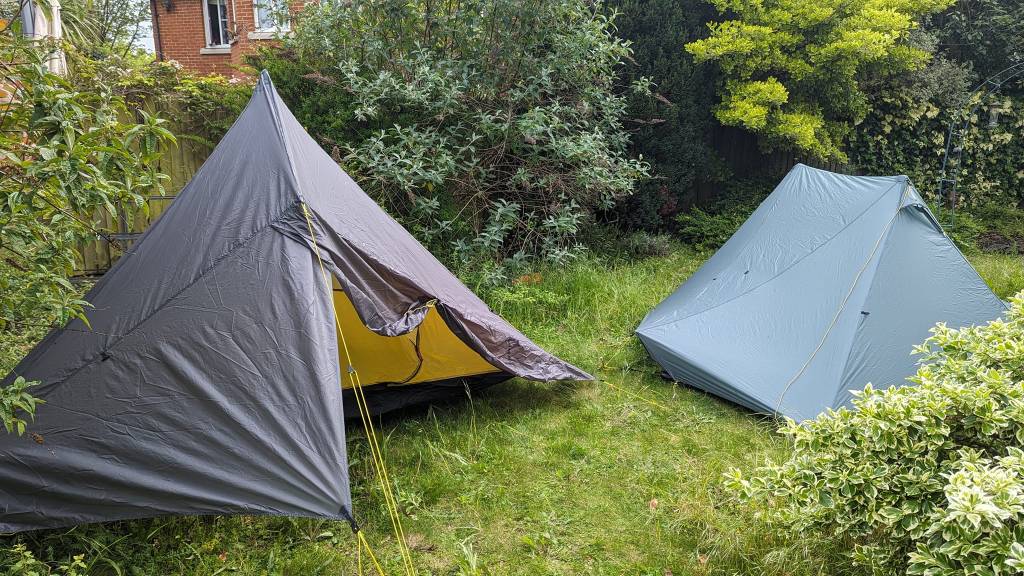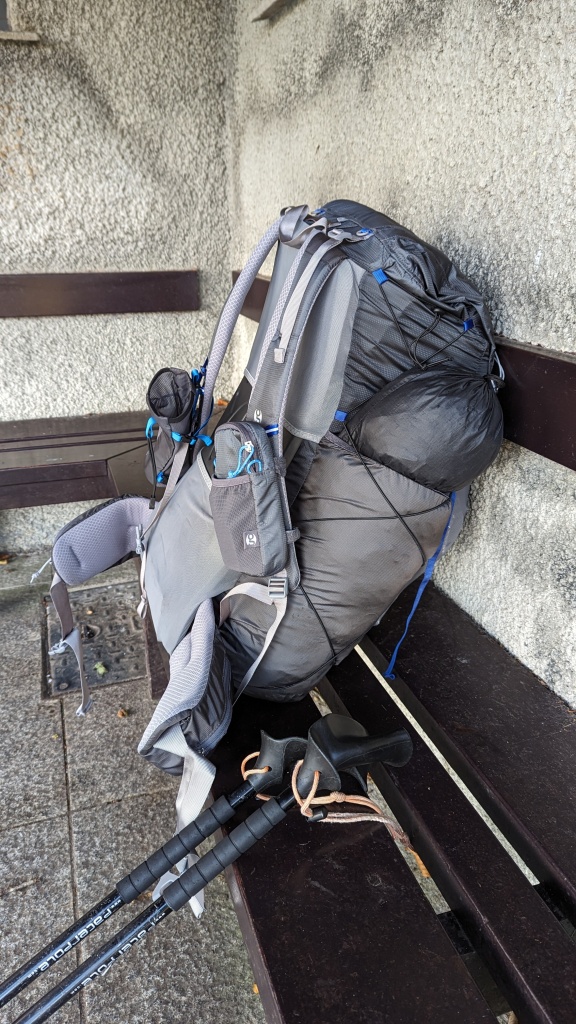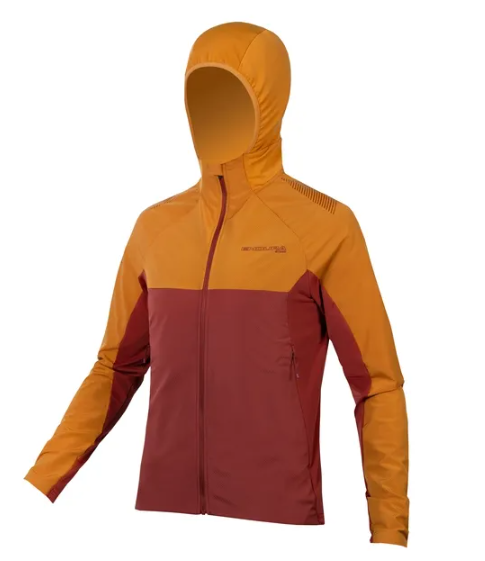*I originally wrote most of this post before setting off, but didn’t quite finish it, so what you have here is updated to change all the verbs to the past tense and with some added hindsight…*
Provisioning
As on all of my Challenges so far, the plan was to be relying on home-dehydrated food topped up with whatever could be got from the shops.
This year, my “civilisation” pattern was pretty even, with me ending days 4, 8 and 12 in towns. So my plan was to eat “off the land” on town days and carry town-sourced food for the next day. That means I only had to cover the 2 other days in each block of 4 from my dehydrated stash. And as I could send a parcel to halfway, I could reduce the amount of that into two smaller amounts.
So my plan was to send a parcel to Newtonmore, which I’d pick up on day 8 with home food for the second half. I’d also shop there for the next day’s meals. I’d also shop in Fort William and Ballater.
I was going to send a parcel to Mar Lodge, but their opening days finished the day before I got there.
After Ballater, I would pass through Tarfside where there would be catering of one sort or another, then Edzell the next day, meaning I need only take home dehydrated food to last me to Ballater.
A final parcel would be sent to the finish in Montrose with clean clothing. I always add in a few treats to this parcel, knowing I’ll forget about them during the crossing and so have a nice surprise when I open it. I’d also be picking up a shiny new Challenge t-shirt of course.
In hindsight: this was all very well, but a re-plan at the end of day 4 introduced a tweak: a re-route up the Great Glen Way added an additional “civilisation” stop in Fort Augustus at the end of day 6. This meant that when I picked up my parcel in Newtonmore (where I eventually stayed on night 8 rather than the original intention of pushing onto Kingussie), I was a bit over-supplied, and consequently sent about half of the food from that parcel straight home again, along with a couple of other unused items.
Gear
Usually my warm-up trip helps me make key gear decisions, but this year it felt like I needed to reflect the conditions on those two walks, so hadn’t quite finalised what I was taking on the Challenge. I was still unsure about which shelter to take, which in turn could influence which pack I used (because of stowage requirements for the selected shelter). For sure it would be one of these…

The pack choice was between the pack I used last time – the Atompacks Mo 60, or a Gossamer Gear Mariposa, which is the pack I’ve used on all my trips for the last 6 months. A pack I formerly loved, sold and recently got an updated model of. It just works, and I suspected it would be the one that won out – especially if I took the Strat as my tent (which is exactly what happened).

Sleep system was, however, pretty clear. I always take my Cumulus Quantum 350 sleeping bag on the Challenge – this is one trip I don’t mess about trying to save on weight and bulk for my bed. I would also have been taking a Thermarest Neoair Xlite but mine lost several of its internal baffles on the first night of the Great Glen Way a couple of weeks before the Challenge , and was on its way to Cascade Designs for warranty repair/replacement. In the meantime I had to get something else, so opted for a Sea to Summit Ultralight Insulated, as I didn’t want to spend silly amounts on a stop gap. In the end, though, the replacement Xlite actually arrived in time for the Challenge, but I took the new Sea to Summit instead – as it was full length, and I’ve really gone off short mats (especially when they fail!).
Cook system was something I was going to be ruthless with. Often I take a pot that I can cook “properly” with, as well as a mug to drink/eat from. Last time I took a small frying pan too. This time, because I should never have to eat dehydrated food for more than 2 nights in a row, I was going to just focus on the most efficient way of boiling water. The only concession I’d make was that I would have one pot for water boiling and one for eating/drinking so that I could both eat and have a hot drink together. After using alcohol stoves on previous Challenges, I decided to take gas only this time.
In hindsight: I stuck to this strategy, taking an MSR Titan kettle as my water boiler, and a GSI Infinisty Fairshare mug to eat out of. This is a larger version of the GSI backpacker’s mug, and is much better for eating from. I did indeed stick with gas, but felt like I was going through it pretty fast (probably wasn’t as fast as it appeared), so did swap out my part used one in Newtonmore for a full one.
Clothing – was still up in the air until about half an hour before I left home. A couple of times in the past I’ve not got it quite right, but clothing is something my recent warm-up trips have helped determine. At the core of my layering system would be my Endura Thermal L/S II Jacket (currently £37.99 from Sportpursuit)

This has been wonderful – just this over a base layer has often been enough even in some quite cool and miserably wet conditions. I’d be taking a waterproof jacket as well, and some extra warmth, but expected this to do 90% of the job. Imagine the irony: I wore it on the initial ferry crossings, then conditions were generally too warm. It went home in my Newtonmore parcel.
On my feet would be Altra Timp 4 shoes – I’ve tried Lone Peaks but prefer the cushioning of the Timps. I’ve tried the new Timp 5, but they seem narrower in the mid foot. So I recently bought several pairs of Timp 4 while they’re still available. Five minutes before leaving home, I looked for and couldn’t find my current pair of Timps. Not having time to faff about, I immediately broke a new pair out of storage and set off with them. This normally wouldn’t be a great idea, but this was my 4th pair of these shoes, and the last pair went straight out to the GGW with no problems. I concluded later that the pair I couldn’t find were still on a Caledonian Sleeper – I remember taking them off and switching to crocs for the journey, but somehow I must have walked off without changing and not spotted them. Now waiting to see if they made it to lost property.
One area where I would be taking a fair bit was electronics, principally because I’d be filming my crossing. This would be 1, maybe 2, action cameras, my phone, assorted tripods, selfie sticks and attachments, microphone and a power bank to power it all. I might even take two power banks.
In the end, I took both action cameras (a normal one and a 360 camera), a tripod, a seriously long selfie stick (3m) and both power banks. This felt to be about right for what I needed. I did send a couple of accessory items home, but that was it.
*This was as far as I got with the original post, apart from the bits in italics which have been added after the event. There’s not much point talking about what else I would be taking, so I’ll just conclude with some other thoughts about the gear I did actually take*
First, there were some things I completely forgot to take, or rather missed when selecting them from my database to generate the packing checklist I always do. These included a midge net (would have been useful), my sun gloves (definitely would have helped in the first half), and a few minor odds and ends. Additionally, I broke my tick card early on.
Probably the best gear decisions I did make were the big ones: taking the Stratospire was bang on for the conditions I experienced and for the type of camping I did. I did enough nights where space wasn’t an issue that the larger footprint of it was welcome. I only had one seriously bad pitch – on night 3 when I couldn’t find anywhere and just plumped for the least bad spot. This tent is a perfect Challenge tent full stop.
Because I was taking the Strat with its fixed end struts, that meant I took the Mariposa as my pack, with its huge deep side pocket to hold the tent. Again an absolutely spot on decision – the pack is versatile enough to adapt as packing needs evolve over a long trip, and was comfortable throughout. My only gripe is the lack of fixed shoulder pockets for holding a water bottle. Adding Gossamer Gear’s own Bottle Rocket only partially fixes this – it’s just not as good as one that’s fully integrated. I had to use a smaller bottle than I would usually to (a) make it easy to get in and out, and (b) not look ridiculous because of how high it was on the strap.
My clothing system ended up being:
- Base layer: Montane Dart (when cooler) or Rab Force (Sun) Hoody (when warmer)
- Legs: Alpkit Koulin Trail tights (full length)
- Socks: various knee length running socks
- Waterproof: Rab Firewall
- Mid-layer: Mountain Equipment Switch Vest
- Shoes: Altra Timp 4
- Hat: Outdoor Research Radar Cap
- Gloves: parkrun gloves (perfect balance of weight and warmth for me)
Although taking a brand new pair of shoes wasn’t ideal, my experience with the Timps has been that they are fine from the off. This pair doesn’t feel quite as roomy as my earlier pairs too – so maybe it isn’t just the Timp 5 that’s been narrowed slightly. What I did find was that at 270km in, I started getting some lower leg aches in my left leg/ankle. Initially I thought this was because I’d walked most of the way just using a single trekking pole in my right hand (ie providing support to the right leg and not really to the left). Certainly using the pole on the left eased it, and I thereafter used both poles. But this meant that the pain then appeared in both lower legs. I’m coming to the conclusion that this might be in part be the shoes. Whilst I’ve done many hundreds of miles in this model of shoe, never have I took it on the Challenge, or done a walk of this length. I got home, put my running shoes on (12mm drop) and my legs were sorted in a few days. Hmmm…
Like on every previous Challenge, there has been a time when there’s an item I wished I’d brought, or wished I hadn’t brought, but that’s just the nature of a longer trip. Ultimately, I got on with it and some of these niggles simply went away, and some I just put up with. At least I didn’t buy more clothing like I have done on two previous Challenges.
At the end of the day, I got the big calls right on my gear, was happy with how everything performed (except possibly the demise of my tick card!), and that’s a theme you’ll see repeating itself in the story of my Challenge in general…
Whilst you didn’t use it on this trip, I’d be really interested in your thoughts on the comfort and robustness of your Atompacks pack. I am thinking of getting a 40 or 50 L one for fast and light weekends.
LikeLike
Well, the Mo is definitely robust – prior to getting the Mariposa, I was pretty much using it for all my multiday trips, and it’s been great. I have a small niggle with the webbing at the bottom of the shoulder straps slipping through the plastic thing if I don’t get everything balanced just right. That aside, it’s comfortable – in fact all 3 of my atom packs have been comfortable. The Atom+ being the least comfortable of the 3 purely because it lacks load lifters – that pack did actually go to Scotland as I sold it to a friend last year and he used it on the Challenge.
If you’re looking at an Atompack for fast and light, then comfort is unlikely to be a problem for you, and robustness will be fine too, in normal use.
LikeLiked by 1 person
Would an Atompacks be your preferred option for ca. 45 L capacity? If not, what would it be? I bought a 42 L Aiguille pack which is well made, practical but the first pack I’ve ever owned which has been uncomfortable.
LikeLike
Yes. I’d always consider an Atompack in that capacity range. But I’d also look at Gossamer Gear and ULA and depending on what specific use case I had in mind maybe some others too. For example, if it was mainly for lowland hiking where I’d be contending with a lot of vegetation and maybe not carrying a lot of weight or for not very many days, I’d also look at budget options as they would probably do the job well enough for that situation. For main backpacking use in the hills, I’d personally be mainly looking at the brands I mentioned. But that’s based on personal experience – all 3 of them make packs I’ve liked and got on well with, so would be first port of call. That’s not to say I wouldn’t look at others, but I’d certainly consider those 3.
LikeLiked by 1 person